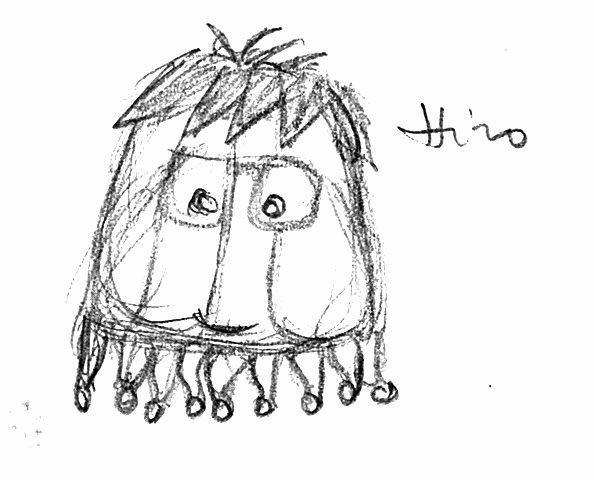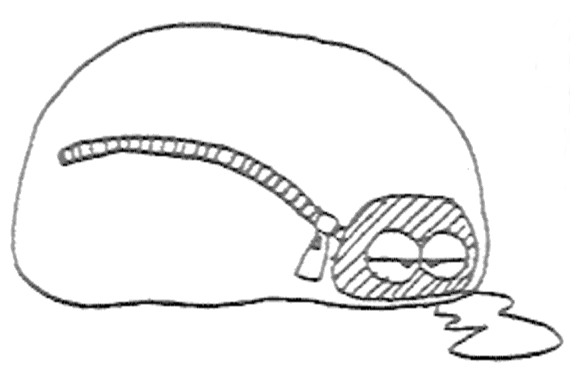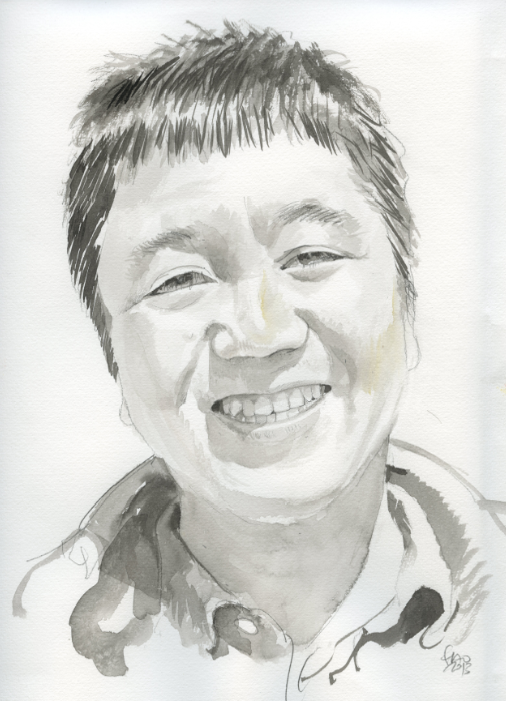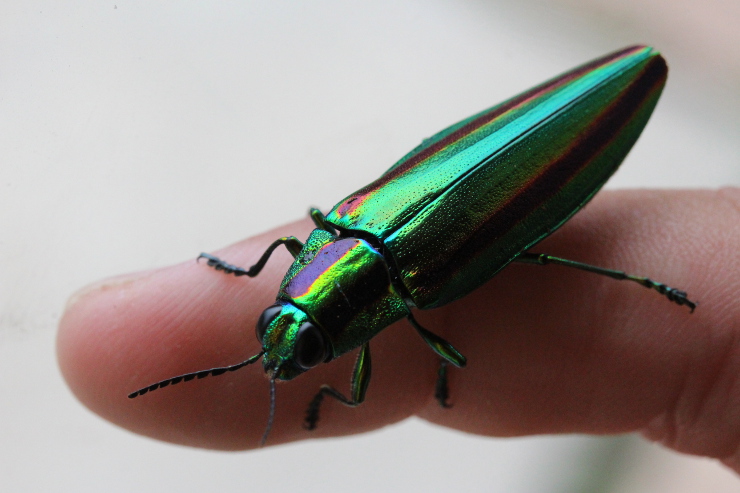
Hiroyuki Ogata
Uji, Kyoto 611-0011, Japan
E-mail: ogata@* (* replaces kuicr.kyoto-u.ac.jp)
Tel: +81-774-38-3274 Fax: +81-774-38-3269
Google Scholar | Facebook | Linkedin | e-Rad | Read & Researchmap
Hiroyuki Ogata is Professor at Institute for Chemical Research, Kyoto University. He received B.Sc, M.Sc, and Dr.Sc degress from Kyoto University, and also received HDR degree from Aix-Marseille University. He previously occupied researcher positions at CNRS and Associate Professor at Tokyo Insitute of Technology.
Dr. Ogata's principal research interest is to understand the evolution and ecology of microorganisms through genomics, metagenomics and bioinformatics approaches. He is currently focusing on large DNA viruses that have large genomes encoding from a few hundreds up to 2700 genes. These giants of the virosphare hold a tremendously large but the least explored genetic pool, the diversity of which would compare with that of cullular organisms.
He has authored over 90 papers in interantional scientific journals including leading journals such as Science, Nature and PLoS Biology. His principal contributions to the this research filed include the discovery of protein coding mobile elements, characterization of ancient origins of giant virus genes, as well as the first quantification of large DNA viruses in marine environemnts through metagenomics.
In a broader perspective, he consider that genetic, species and morphological characterization of microbial world is an essential step towards advancing current biology. Such a research direction might parallel with the efforts of naturalists in 18th century, who collected, examined and classified macro-organisms, finally leading to "Systema Naturae" of Carl Linnaeus and, a hundred year later, to "On the Origin of Species" by Charles R. Darwin.
Recent production
- Wilson W.H., Gilg I.C., Duarte A., Ogata H. Development of DNA mismatch repair gene, MutS, as a diagnostic marker for detection and phylogenetic analysis of algal Megaviruses. Virology, doi: 10.1016/j.virol.2014.07.001. (2014).
- Clerissi C., Grimsley N., Ogata H., Hingamp P., Poulain J., Desdevises Y. Unveiling of the diversity of Prasinoviruses (Phycodnaviridae) in marine samples by using high-throughput sequencing analyses of PCR-amplified DNA polymerase and major capsid protein genes. Appl. Environ. Microbiol., 80, 3150-3160 (2014).
- 緒方博之, 武村政春. 巨大ウイルスがもたらしたパンドラの箱 生物と科学 遺伝, 68, 194-199 (2014).
Research subjects
Girus genomics
Why giant viruses, or giruses, have such large genomes? How did they evolve during their long history of interactions with cellular hosts? Why are they so different at the genetic sequence level, while they share similar morphology at the virion phase of their life?Related publications
- Raoult D., Audic S., Robert C., Abergel C., Renesto P., Ogata H., La Scola B., Suzan M., Claverie J.-M. The 1.2-megabase genome sequence of Mimivirus. Science, 306, 1344-1350 (2004).
- Ogata H., Claverie J.-M. Unique genes in giant viruses: regular substitution pattern and anomalously short size. Genome Res., 17, 1353-1361 (2007). BMC Genomics, 8, 456 (2007).
- Yoshida T., Nagasaki K., Takashima Y., Shirai Y., Tomaru Y., Takao Y., Sakamoto S., Hiroishi S., Ogata H. Ma-LMM01 infecting toxic Microcystis aeruginosa illuminates diverse cyanophage genome strategies. J. Bacteriol., 190, 1762-1772 (2008).
- Monier A., Claverie J.-M., Ogata H. Taxonomic distribution of large DNA viruses in the sea. Genome Biol., 9, R106 (2008)
- Ogata H., Claverie J.-M. How to infect a Mimivirus. Science, 321, 1305-1306 (2008).
- Monier A., Pagarete A., de Vargas C., Allen M.J., Read B., Claverie J.-M., Ogata H. Horizontal gene transfer of an entire metabolic pathway between a eukaryotic alga and its DNA virus. Genome Res., 19, 1441-1449 (2009).
- Claverie J.-M., Ogata H. Ten good reasons not to exclude giruses from the evolutionary picture. Nat. Rev. Microbiol., 7, 615 (2009).
- Ogata H., Ray J., Toyoda K., Sandaa R.-A., Nagasaki K., Bratbak G., Claverie J.-M. Two new subfamilies of DNA mismatch repair proteins (MutS) specifically abundant in the marine environment. ISME J., 5, 1143-1151 (2011).
- Yoshida T., Claverie J.-M., Ogata H. Mimivirus reveals Mre11/Rad50 fusion proteins with a sporadic distribution in eukaryotes, bacteria, viruses and plasmids. Virol J., 8, 427 (2011).
Metagenomics and eukaryotic genomics
We attempt to characterize the interaction between microorgansims, especially focusing on girus-eukaryote system in marine environemnts.Ongoing projects
- Tara Oceans Projects: An international
marine microbial project directed by Dr. Karsenti at EMBL. Dr. Ogata is a coordinator of the project.
(Hiroyuki Ogata is partially supported by JSPS KAKENHI Grant Number 26430184, 2014-2017)
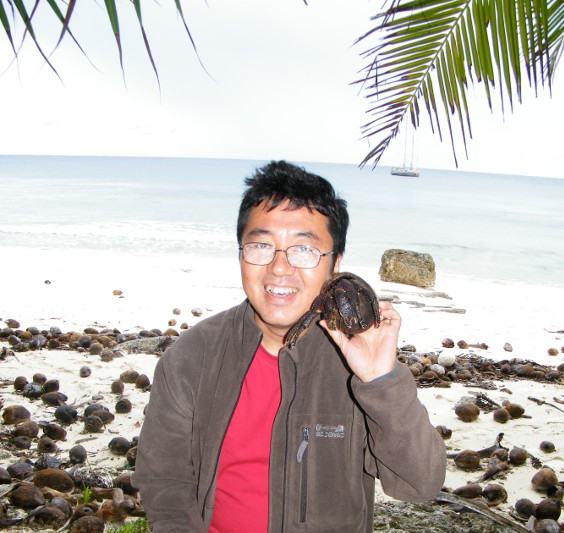
- Viral metagenomics with the group of Dr. Takashi Yoshida,
Kyoto University: We aim to identify virus-host pairs in natural samples by metagenomics and metatranscriptomics.
(This project is coordinated by Takashi Yoshida and supported by Canon Foundation, 2014-2017).
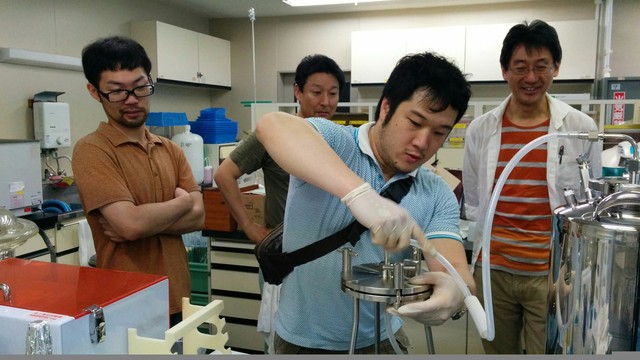

Related publications
- Karsenti E., Gonzales Acinas S., Bork P, Bowler C, De Vargas C., Raes J., Sullivan M., Arendt D., Benzoni F., Claverie J.-M., Follows M., Jaillon O., Gorsky G., Hingamp P., Iudicone D., Kandels-Lewis S., Krzic U., Not F., Ogata H., Pesant S., Georges Reynaud E., Sardet C., Edward Sieracki M, Speich S., Velayoudon D., Weissenbach J., Wincker P.; the Tara Oceans Consortium. A holistic approach to marine ecosystems biology. PLoS Biol., 9, e1001177 (2011).
- Hingamp P., Grimsley N., Acinas S.G., Clerissi C., Subirana L., Poulain J., Ferrera I., Sarmento H., Villar E., Lima-Mendez G., Faust K., Sunagawa S., Claverie J.-M., Moreau H., Desdevises Y., Bork P., Raes J., de Vargas C., Karsenti E., Kandels-Lewis S., Jaillon O., Not F., Pesant S., Wincker P., Ogata H. Exploring nucleo-cytoplasmic large DNA viruses in Tara Oceans microbial metagenomes. ISME J., doi:10.1038/ismej.2013.59. (2013).
- Read B.A., Kegel J., Klute M.J., Kuo A., Lefebvre S.C., Maumus F., Mayer C., Miller J., Monier A., Salamov A., Young J., Aguilar M., Claverie J.-M., Frickenhaus S., Gonzalez K., Herman E.K., Lin Y.-C., Napier J., Ogata H., Sarno A.F., Shmutz J., Schroeder D., de Vargas C., Verret F., von Dassow P., Valentin K., Van de Peer Y., Wheeler G.; Emiliania huxleyi Annotation Consortium, Dacks J.B., Delwiche C.F., Dyhrman S.T., Glockner G., John U., Richards T., Worden A.Z., Zhang X., Grigoriev I.V. Pan genome of the phytoplankton Emiliania underpins its global distribution. Nature, 488, 209-213 (2013).
Genomics of intracellular pathogens
How did small parasitic bacterial genomes evolve? What was their insentive to become parasites from free living organisms?Related publications
- Ogata H., Audic S., Barbe V., Artiguenave F., Fournier P.-E., Raoult D., Claverie J.-M. Selfish DNA in protein coding genes of Rickettsia. Science, 290, 347-350 (2000).
- Ogata H., Audic S., Renesto-Audiffren P., Fournier P.-E., Barbe V., Samson D., Roux V., Cossart P., Weissenbach J., Claverie J.-M., Raoult D. Mechanisms of evolution in Rickettsia conorii and R. prowazekii. Science, 293, 2093-2098 (2001).
- Renesto P., Crapoulet N., Ogata H., La Scola B., Vestris G., Claverie J.-M., Raoult D. Genome-based design of a cell-free culture medium for Tropheryma whipplei. Lancet, 362, 447-449 (2003).
- Ogata H., La Scola B., Audic S., Renesto P., Blanc G., Robert C., Fournier P.-E., Claverie J.-M., Raoult D. Genome sequence of Rickettsia bellii illuminates the role of amoebae in gene exchanges between intracellular pathogens. PLoS Genet., 2, e76 (2006).
Previous laboratories
By my friends ...
